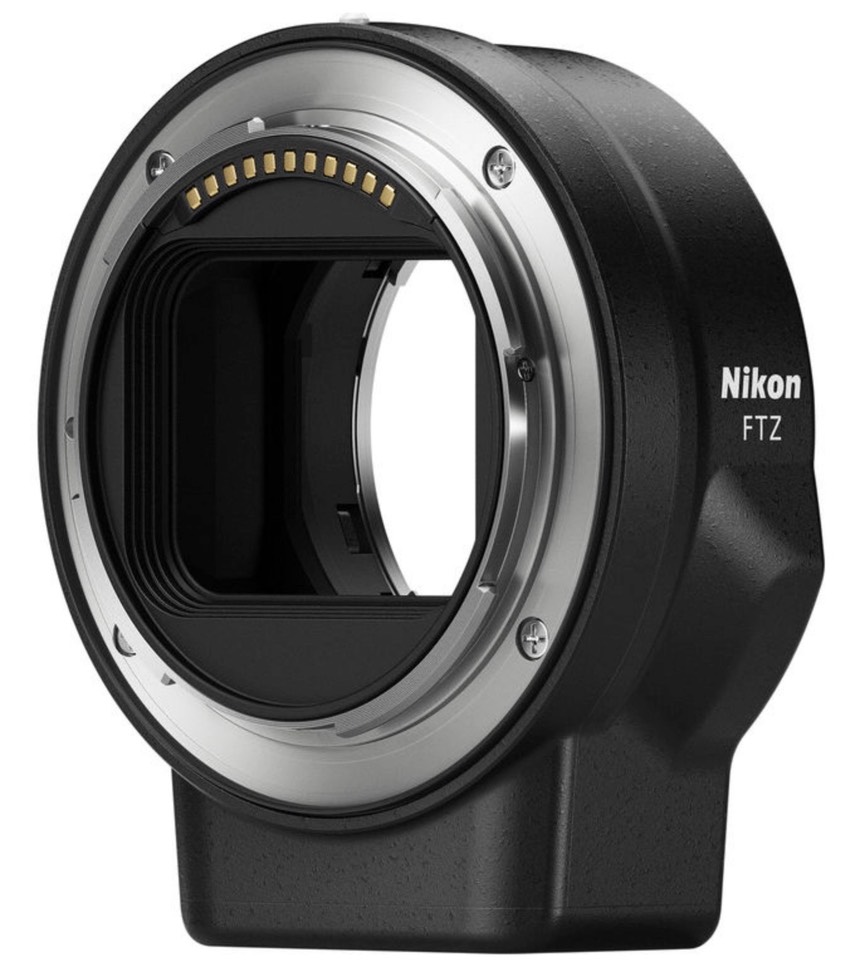
The FTZ adapter allows use of Nikon F mount lenses on Z cameras. The original FTZ adapter (above) includes a tripod foot. The FTZ II adapter launched with the Z9 camera is identical to the original other than not having the tripod foot (foot interferes with vertical grip on the Z9).
As I outlined in an earlier article , there a number of things that need to be supported in a perfect adapter:
- Autofocus by in-lens motor (e.g. AF-I, AF-S, or AF-P) FTZ supports
- Autofocus by camera screwdrive motor (many older D lenses)
- Focus confirmation with in-viewfinder rangefinder FTZ supports with some exceptions
- VR support FTZ supports (requires manual data input)
- Manual focus FTZ supports
- Exposure modes (P A S M) FTZ supports with some exceptions
- Metering FTZ supports with some exceptions
The following is the full compatibility chart you need to be aware of:
- AF-I, AF-S, AF-P lenses: fully compatible (but AF-I lenses can't be used with the focus stack shooting feature).
- G and D type lenses with screw drive autofocus: do not autofocus, otherwise fully compatible. The FTZ Adapter does not have the motor necessary to focus these lenses, thus they must be focused manually. Lenses with aperture rings must be set to their minimum aperture.
- Other earlier AF lenses: no focus features, but will mount and meter.
- PC-E lenses: no autofocus features as they're all manual focus lenses, otherwise fully compatible except for the 85mm f/2.8D version, which can only be used in Manual exposure mode.
- AI-P lenses: no autofocus features as they're manual focus lenses, otherwise fully compatible.
- AI lenses (including original E series lenses): manual focus, meter in Aperture and Manual exposure modes only, camera will show F--, maximum aperture is the only thing that will be recorded in EXIF data (assuming you input Non-CPU lens data). If you want to use VR focal length must be entered correctly in Non-CPU data for VR to function properly.
- pre-AI lenses (no index tab): manual focus, meter in Aperture and Manual exposure modes only, camera will show F--, maximum aperture is the only thing that will be recorded in EXIF data (assuming you input Non-CPU lens data). If you want to use VR focal length must be entered correctly in Non-CPU data for VR to function properly.
Nikon's usual list of specific lenses that are incompatible—which has remained the same for over a decade—continues to be the same. Things like the TC-16A and old AU-I focus lenses, for instance, as well as some specific serial numbers for some older lenses. But none of these lenses would work on a modern Nikon DSLR, either, so I don't think it important to list them here.
Nikon does caution about using lenses over 46 ounces (1300g) on the FTZ adapter. The 70-200mm f/2.8E is just over that mark. Doing some quick and dirty measurements, on an F-mount camera the torque due to weight of the 70-200mm is about 0.5 ft-lbs on the mount, while that increases by about 25% to about 0.7 ft-lbs sitting out front on an FTZ adapter. So be careful of supporting heavy lenses by the lens when using them on the FTZ adapter.
Third party lens makers have their own information on which of their lenses work on the FTZ adapter: Sigma, Tamron.
The Arca-style foot Thom uses for his FTZ adapter is the Stabil FTZF.
Thom's Comments about the FTZ Adapter: With the exception of Nikon screw-drive lenses and older third-party lenses, the FTZ basically just works, and makes it easy to contemplate moving from Nikon DSLR to Nikon mirrorless for most. Every Nikon Z owner should probably have an FTZ Adapter. Note that some early versions were very tight in the mount. Also be careful to support heavy lenses by the lens, not the camera. Z9 owners should opt for the FTZ II adapter, otherwise you'll find hand space compromised when using the vertical grip.
Support this site by purchasing from the following advertiser:
